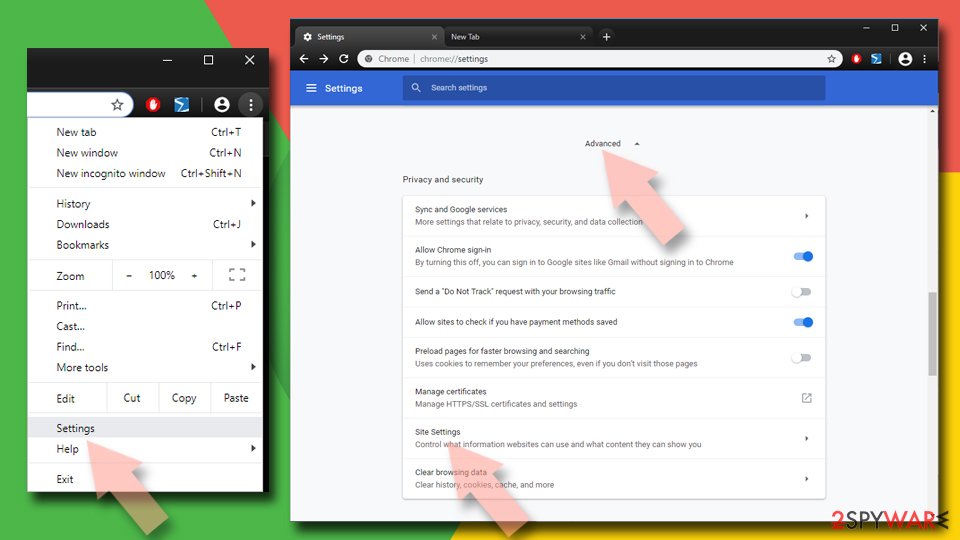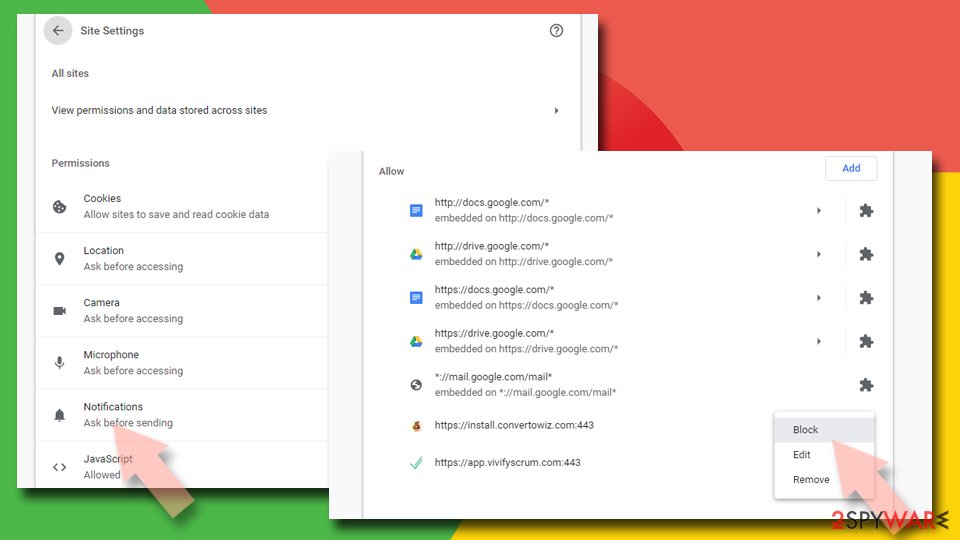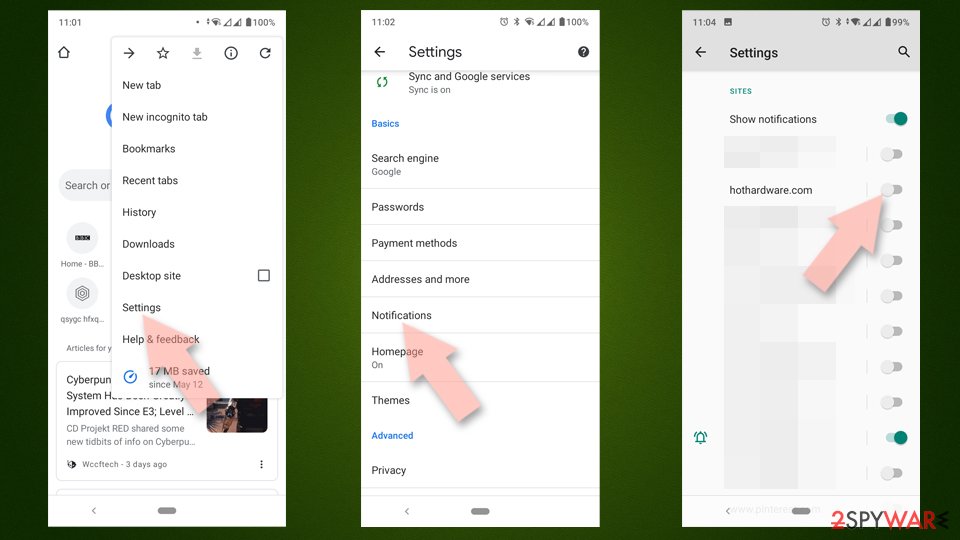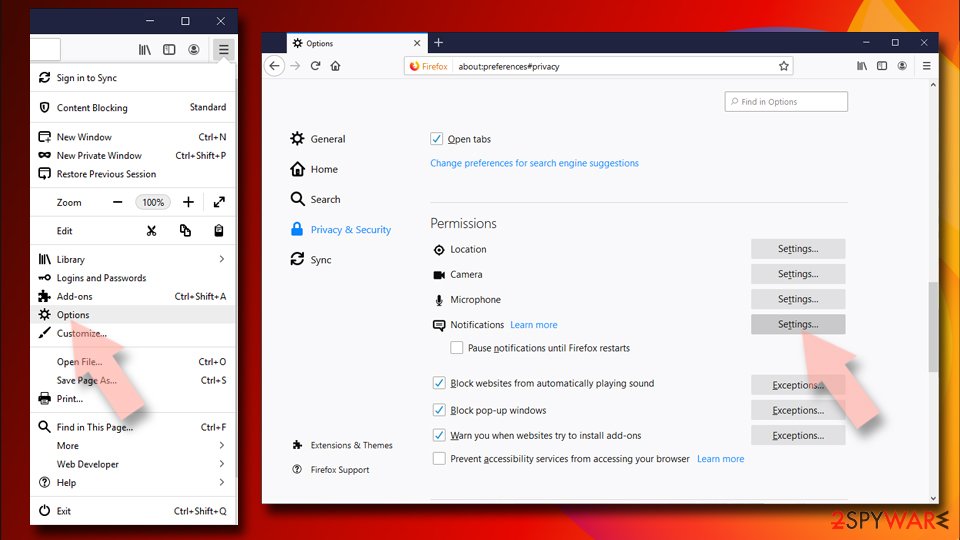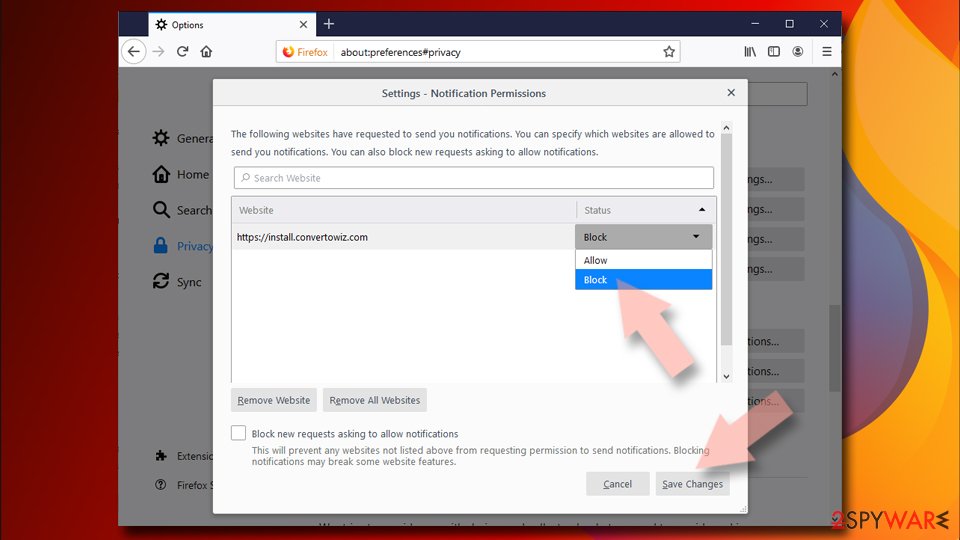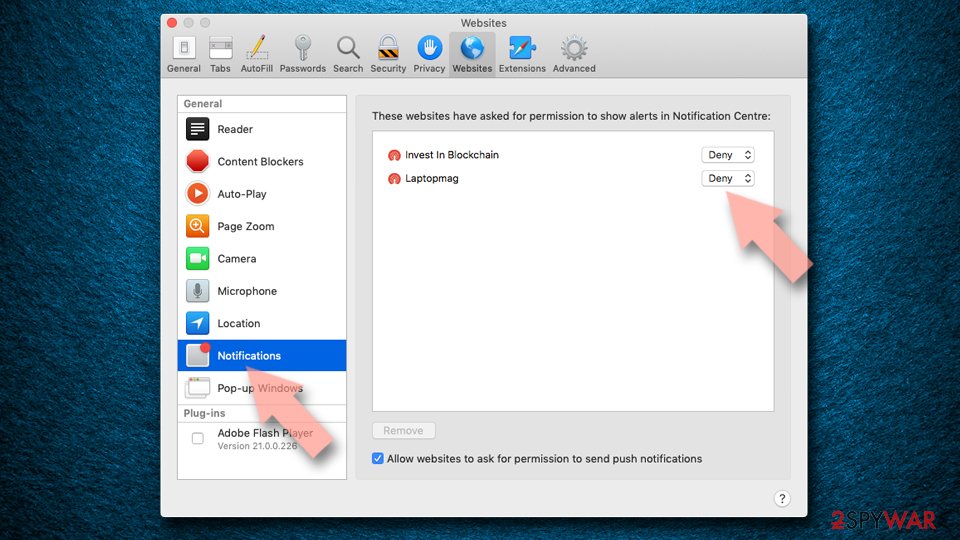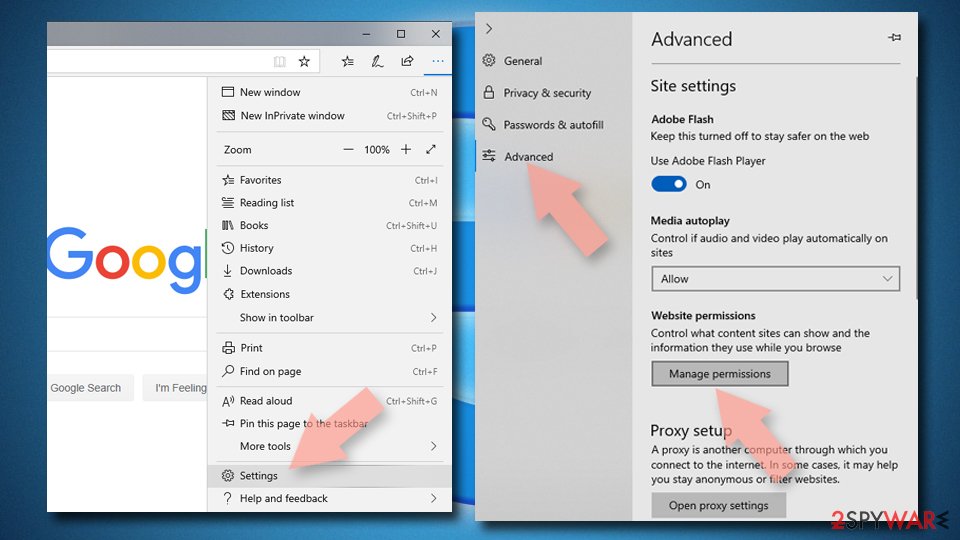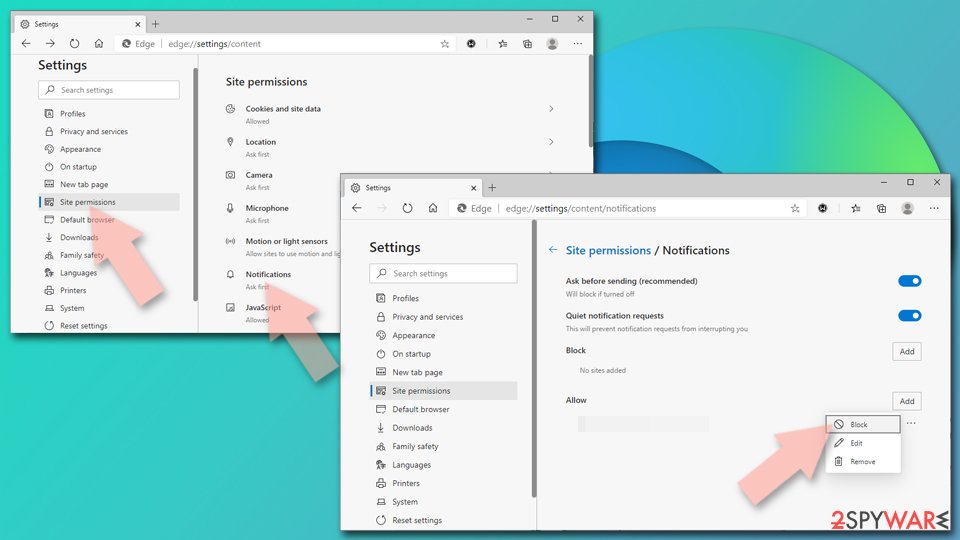Av-com.co.in ads (fake) - Free Guide
Av-com.co.in ads Removal Guide
What is Av-com.co.in ads?
Av-com.co.in is a bogus site created by crooks to profit from unsuspecting users

Av-com.co.in is a shady website that uses misleading methods to persuade visitors to sign up for push notifications. It uses a false message to entice visitors into clicking the “Allow” button in order to access the content by tricking them into thinking it's only a human verification step.
The website uses social engineering[1] methods to trick users into clicking “Allow,” which adds them to the list of people who receive push notifications. As a result, users are bombarded with intrusive pop-up adverts, some of which may continue to appear even after the browser has been closed. Additionally, crooks may use shady advertising networks to promote adverts that direct users to dangerous websites.
Users risk unintentionally visiting malicious websites that aim to steal personal information, trick them into downloading potentially unwanted programs (PUPs),[2] or even install malware when they click on the links in these messages. These behaviors can have serious consequences, including operating system damage, identity theft, and monetary losses.
| NAME | Av-com.co.in |
| TYPE | Push notification spam; adware |
| SYMPTOMS | Pop-up ads start appearing in the corner of the screen unexpectedly, sometimes even when the browser is closed |
| DISTRIBUTION | Shady websites; deceptive ads; freeware installations |
| DANGERS | The pop-ups can contain links leading to websites from rogue advertising networks |
| ELIMINATION | Go to your browser settings to disable browser permissions |
| FURTHER STEPS | Use FortectIntego to fix any remaining damage and clear your browsers |
Social engineering
Cybercriminals today no longer rely on their ability to hack computers; instead, they take advantage of people's activities by creating deceptive messages and graphics. Push notification spam pages frequently pose as CAPTCHA verification stages and provide misleading information to visitors, including:
Type Allow to verify that you are not a robot
Click Allow to watch the video
Download is ready. Click Allow to download your file
Press Allow to verify that you are not a robot
These messages all promise access to particular content when you click the “Allow” button, which is a recurrent theme of deception. It's important to remember, though, that a genuine human verification procedure would never provide consumers the option to “Block” or “Allow” within a browser popup.
Users are frequently required to either check a box or recognize specific things in images, such as bicycles or traffic lights, as part of a legitimate CAPTCHA verification. The verification method does not typically involve unusual robot imagery. It is crucial to use caution and evaluate the reliability of the websites you visit when browsing the internet.

Turn off the intrusive pop-ups
Below you will find a manual guide on how to disable pop-ups from Av-com.co.in. Because push notifications are subscription-based, you will have to disable them yourself:
Google Chrome (desktop):
- Open Google Chrome browser and go to Menu > Settings.
- Scroll down and click on Advanced.
- Locate the Privacy and security section and pick Site Settings > Notifications.
![Stop notifications on Chrome PC 1 Stop notifications on Chrome PC 1]()
- Look at the Allow section and look for a suspicious URL.
- Click the three vertical dots next to it and pick Block. This should remove unwanted notifications from Google Chrome.
![Stop notifications on Chrome PC 2 Stop notifications on Chrome PC 2]()
Google Chrome (Android):
- Open Google Chrome and tap on Settings (three vertical dots).
- Select Notifications.
- Scroll down to Sites section.
- Locate the unwanted URL and toggle the button to the left (Off setting).
![Stop notifications on Chrome Android Stop notifications on Chrome Android]()
Mozilla Firefox:
- Open Mozilla Firefox and go to Menu > Options.
- Click on Privacy & Security section.
- Under Permissions, you should be able to see Notifications. Click Settings button next to it.
![Stop notifications on Mozilla Firefox 1 Stop notifications on Mozilla Firefox 1]()
- In the Settings – Notification Permissions window, click on the drop-down menu by the URL in question.
- Select Block and then click on Save Changes. This should remove unwanted notifications from Mozilla Firefox.
![Stop notifications on Mozilla Firefox 2 Stop notifications on Mozilla Firefox 2]()
Safari:
- Click on Safari > Preferences…
- Go to Websites tab and, under General, select Notifications.
- Select the web address in question, click the drop-down menu and select Deny.
![Stop notifications on Safari Stop notifications on Safari]()
MS Edge:
- Open Microsoft Edge, and click the Settings and more button (three horizontal dots) at the top-right of the window.
- Select Settings and then go to Advanced.
- Under Website permissions, pick Manage permissions and select the URL in question.
![Stop notifications on Edge 1 Stop notifications on Edge 1]()
- Toggle the switch to the left to turn notifications off on Microsoft Edge.
MS Edge (Chromium):
- Open Microsoft Edge, and go to Settings.
- Select Site permissions.
- Go to Notifications on the right.
- Under Allow, you will find the unwanted entry.
- Click on More actions and select Block.
![Stop notifications on Edge Chromium Stop notifications on Edge Chromium]()
Cookies and cache
If you've been able to successfully block adverts using your browser's settings, it's now critical to preserve the functionality of your browser by deleting its cookies[3] and cache. These components are used by almost every website to track your online activities and can store data such your IP address, geolocation, websites you've visited, and online purchases.
This step becomes even more crucial considering that you might have been exploring websites with a worse reputation. Alternatively, we provide an automatic option – FortectIntego – if you'd rather avoid a time-consuming manual process. This powerful program effectively removes a variety of system issues, replaces corrupted files, and fixes registry problems in addition to cleaning cookies and cache.
Clear cache and web data from Chrome:
- Click on Menu and pick Settings.
- Under Privacy and security, select Clear browsing data.
- Select Browsing history, Cookies, and other site data, as well as Cached images and files.
- Click Clear data.
![Clear cache and web data from Chrome Clear cache and web data from Chrome]()
Remove adware from your system
If you've followed the previous steps but still encounter unwelcome symptoms like an influx of commercial content, pop-ups, banners, and redirects, it's essential to investigate your system for signs of adware infection. Adware, short for advertising-supported software, is responsible for the surge in commercial content on your device in the form of pop-ups, banners, or redirects.
Typically, individuals inadvertently introduce adware into their systems when they install programs from freeware distribution platforms. These platforms often bundle additional applications within their installers, disguising them as seemingly “useful” tools. Many users rush through the installation process, often missing these bundled additions.
To safeguard your system, always opt for “Custom” or “Advanced” installation methods, carefully review the Privacy Policy and Terms of Use, and, most importantly, scrutinize the list of files to uncheck any unrelated applications. For added security, consider exclusively using official web stores and developer websites when installing software.
Given the uncertainty surrounding which specific application may be causing these issues, we recommend utilizing SpyHunter 5Combo Cleaner or Malwarebytes anti-malware tools capable of automatically scanning your system and eradicating any adware infections. However, if you are confident in your abilities and prefer a do-it-yourself approach, we provide instructions for both Windows and macOS:
Windows 10/8:
- Enter Control Panel into Windows search box and hit Enter or click on the search result.
- Under Programs, select Uninstall a program.
![Uninstall from Windows 1 Uninstall from Windows 1]()
- From the list, find the entry of the suspicious program.
- Right-click on the application and select Uninstall.
- If User Account Control shows up, click Yes.
- Wait till uninstallation process is complete and click OK.
![Uninstall from Windows 2 Uninstall from Windows 2]()
Windows 7/XP:
- Click on Windows Start > Control Panel located on the right pane (if you are Windows XP user, click on Add/Remove Programs).
- In Control Panel, select Programs > Uninstall a program.
![Uninstall from Windows 7/XP Uninstall from Windows 7/XP]()
- Pick the unwanted application by clicking on it once.
- At the top, click Uninstall/Change.
- In the confirmation prompt, pick Yes.
- Click OK once the removal process is finished.
Mac:
- From the menu bar, select Go > Applications.
- In the Applications folder, look for all related entries.
- Click on the app and drag it to Trash (or right-click and pick Move to Trash)
![Uninstall from Mac 1 Uninstall from Mac 1]()
To entirely remove an unwanted app, you need to access Application Support, LaunchAgents, and LaunchDaemons folders and delete relevant files:
- Select Go > Go to Folder.
- Enter /Library/Application Support and click Go or press Enter.
- In the Application Support folder, look for any suspicious entries and then delete them.
- Now enter /Library/LaunchAgents and /Library/LaunchDaemons folders the same way and terminate all the related .plist files.
![Uninstall from Mac 2 Uninstall from Mac 2]()
How to prevent from getting adware
Stream videos without limitations, no matter where you are
There are multiple parties that could find out almost anything about you by checking your online activity. While this is highly unlikely, advertisers and tech companies are constantly tracking you online. The first step to privacy should be a secure browser that focuses on tracker reduction to a minimum.
Even if you employ a secure browser, you will not be able to access websites that are restricted due to local government laws or other reasons. In other words, you may not be able to stream Disney+ or US-based Netflix in some countries. To bypass these restrictions, you can employ a powerful Private Internet Access VPN, which provides dedicated servers for torrenting and streaming, not slowing you down in the process.
Data backups are important – recover your lost files
Ransomware is one of the biggest threats to personal data. Once it is executed on a machine, it launches a sophisticated encryption algorithm that locks all your files, although it does not destroy them. The most common misconception is that anti-malware software can return files to their previous states. This is not true, however, and data remains locked after the malicious payload is deleted.
While regular data backups are the only secure method to recover your files after a ransomware attack, tools such as Data Recovery Pro can also be effective and restore at least some of your lost data.
- ^ Social Engineering. Imperva. Learning Center.
- ^ Chris Hoffman. PUPs Explained: What is a “Potentially Unwanted Program”?. Howtogeek. Technology Magazine.
- ^ Chris Maus. What Are Cookies and Are They Dangerous?. Qkey. Secure Online Payment Providers.
